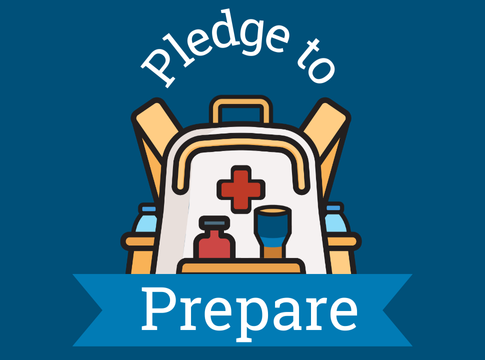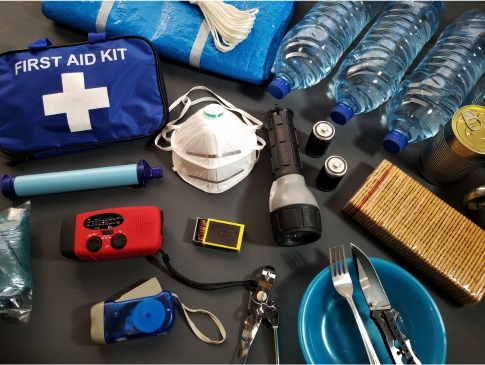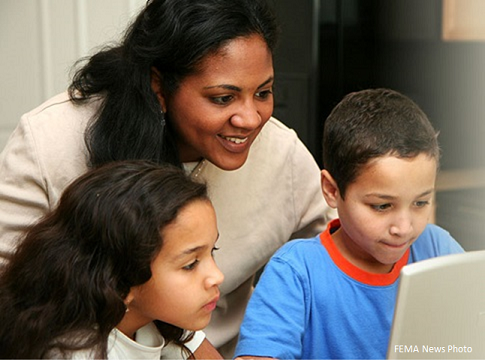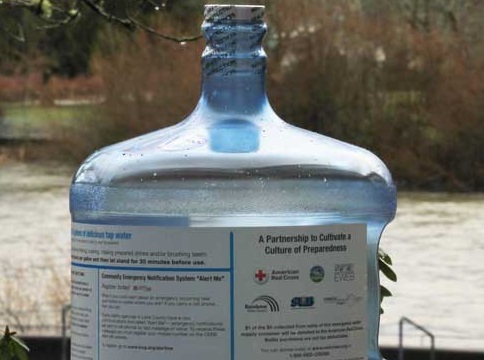Be 2 Weeks Ready
Making a food plan is a key step to being 2 Weeks Ready. You and your household, including service animals, pets and large animals, need food to survive any emergency. With a food plan, you'll know how to gather and store non-perishable food and how to prepare it during a power outage.
Make a food plan
Choose foods your household will eat that don't require refrigeration and have a long shelf life. COST TIP: Add one can of food to your shopping cart each time you visit the store to help reduce expensive bulk purchases.
- Ready-to-eat canned meats, fish, fruits, and vegetables
- Protein bars and fruit bars
- Pudding cups
- Dried cereal and granola
- Comfort foods
- Canned soups and chilis
- Non-perishable pasteurized milk in cans or cartons
- Food for infants
- Pet food
Learn more about suggested emergency food supplies.
Alternative methods to heat up food during a power outage
- Fireplace or Wood Stove. Cast iron skillets and dutch ovens are your best friends for these methods!
- Solar Ovens & Stoves. Lightweight and portable, they work by concentrating solar energy into a box to heat up whatever is inside.
- BBQ, Propane Grill, or Gas Grill. Just remember to ALWAYS use them outdoors!
Keeping food cold when the power goes out
Any time the power goes out, keep the refrigerator and freezer doors closed as much as possible to maintain the cold temperature. The refrigerator will keep food cold for about four hours if it is unopened. A full freezer will keep the temperature for approximately 48 hours if the door remains closed. The U.S. Department of Agriculture (USDA) recommends these food safety steps to follow before and during a power outage.
Back-up power sources
Being prepared with a back-up power system in the event of a major disaster or prolonged power outage is an important part of disaster planning, especially for people who use electricity and battery-dependent assistive medical devices such as breathing machines or power wheelchairs. Learn more about our Residential Medical Support Program.
Generating your own power
Backup generators and other backup power options including battery storage systems can help provide peace of mind should such an event occur.
There are two kinds of generators, portable and permanent. Portable generators are intended to provide power to an extension cord which is then plugged directly into an appliance or piece of equipment. Permanent generators are wired directly into the electrical system of your home. Learn more about generator safety.
We want to help our customers increase their safety and resilience in a power outage. EWEB offers a Backup Power Program to assist with the purchase and installation of a backup power system and mechanism to safely power to safely power critical components in a home during an emergency. Backup power systems can include generators or battery storage systems for the purposes of backup power.
Let there be light
Whether a natural disaster or just an unanticipated power outage, having emergency lighting is critical to helping you navigate the darkness. LED flashlights provide super bright light and last for hours. Keep several flashlights at home and keep one in each of your cars. Lightsticks and emergency candles or lanterns can provide low level lighting for extend periods of time. Make sure your emergency kit includes extra batteries.
Stay connected
Smartphones have become a vital tool to receive emergency alerts and warnings, so it's important to make sure you can keep them powered up in an emergency. If the power goes out, preserve battery power by minimizing device use and changing the setting to low power mode or airplane mode. Have an emergency charging option for your phone and other mobile devices.

Pledge to Prepare
Increasing our overall disaster resilience is the responsibility of every community member. The Oregon Office of Emergency Management encourages residents to be prepared to be on their own for a minimum of two weeks.
Pledge to Prepare is a monthly newsletter that includes a 12-month, step-by-step plan to prepare your home and family for an emergency. If you are overwhelmed by the thought of preparing your home and family for a natural disaster, join the Pledge to Prepare and you'll have support every step of the way.
Take the PledgeRelated Programs
Here are some ideas to help your family stay safe and comfortable during an emergency.
Here are some tips about creating an emergency communication plan and signing up for local emergency alerts.




